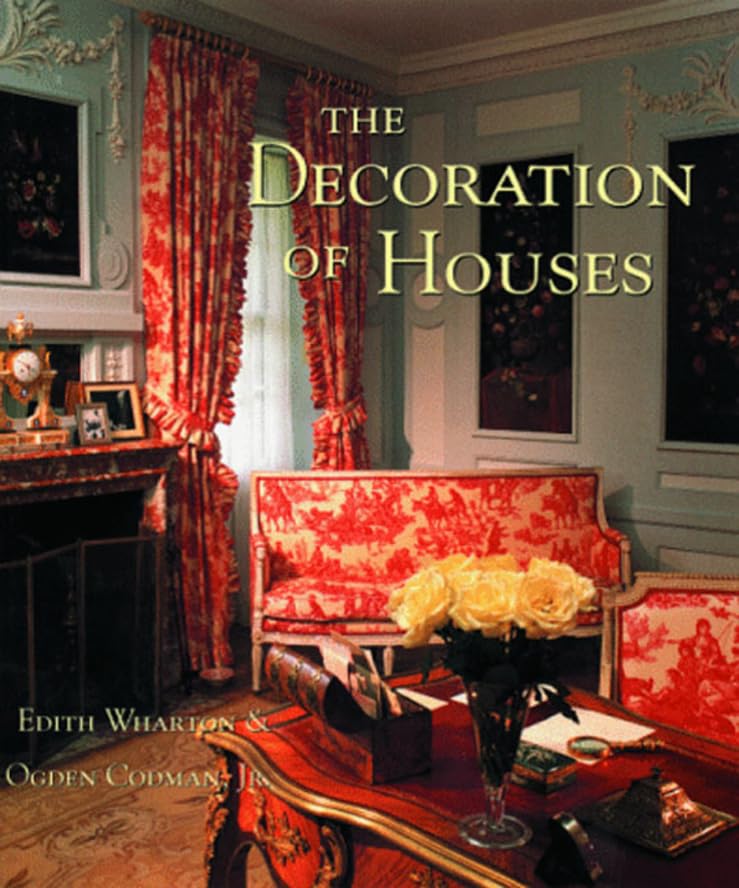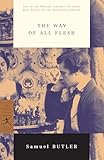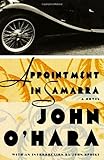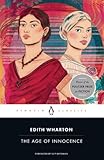 Some books are so a part of one it seems a folly to write even a paltry 700 words on their virtues. The Age of Innocence, which in my personal pantheon outshines Catcher in the Rye as the consoling novel for angsty and literate youth, confirmed my adolescent suspicion that people spoke and lived in codes. Immured in boarding school, that life was dictated by iron and mostly disagreeable statutes was patently obvious to teenaged me. But The Age of Innocence went beyond these; it spoke to the rules within rules–the ways that people prevent one another (especially girls, it seemed) from doing what they like, and the cowardice that stops people from going against the grain.
Some books are so a part of one it seems a folly to write even a paltry 700 words on their virtues. The Age of Innocence, which in my personal pantheon outshines Catcher in the Rye as the consoling novel for angsty and literate youth, confirmed my adolescent suspicion that people spoke and lived in codes. Immured in boarding school, that life was dictated by iron and mostly disagreeable statutes was patently obvious to teenaged me. But The Age of Innocence went beyond these; it spoke to the rules within rules–the ways that people prevent one another (especially girls, it seemed) from doing what they like, and the cowardice that stops people from going against the grain.
I don’t know if Edith Wharton intended this book to be read at as an epoch-spanning indictment of society’s bloodless crimes, or if she really thought that the immutable canon of the 1870s was finished and gone. One introduction I have seen instructs us to read The Age of Innocence less as a protest novel and more as a biting satire and a send-up of the gilded age. To be sure, it is a deeply sardonic novel; but if Wharton intended only to be a period satirist, she’s made a fool out of me.
 Wharton’s novel and its more dramatic precursor, The House of Mirth, knew with what my jangled adolescent nerves suspected; Wharton wrote the things that people know but won’t say. Affirmed by these novels and fancying myself an Ellen (or even, horribly, a Lily Bart), I went about doing as I thought I pleased, garnering disapprobation. My messy room and demerits and cigarette smoking obscured (from myself, at least) my inner Newland, the realities my own coded speech and behavior and dress, the cruelties I served up to others. In the grand scheme of things, mine was rather a charmed adolescence. Perhaps I rankled against against society, against school’s constraints. But like Newland, I hardly wanted to leave.
Wharton’s novel and its more dramatic precursor, The House of Mirth, knew with what my jangled adolescent nerves suspected; Wharton wrote the things that people know but won’t say. Affirmed by these novels and fancying myself an Ellen (or even, horribly, a Lily Bart), I went about doing as I thought I pleased, garnering disapprobation. My messy room and demerits and cigarette smoking obscured (from myself, at least) my inner Newland, the realities my own coded speech and behavior and dress, the cruelties I served up to others. In the grand scheme of things, mine was rather a charmed adolescence. Perhaps I rankled against against society, against school’s constraints. But like Newland, I hardly wanted to leave.
When it was written, The Age of Innocence was about the olden days, the creaking conventions of which had long since been left by the wayside. The specifics would have been easily recognized by 1920s readers; some of them escape me today. Of Ellen Olenska’s estranged husband, it is said:
A half-paralysed white sneering fellow–rather handsome head, but eyes with a lot of lashes. Well, I’ll tell you the sort: when he wasn’t with women he was collecting china. Paying any price for both, I understand.
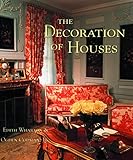 Oh, snap? But while the novel serves as an exquisite period piece filled with details of costume and decor (not for nothing is Wharton’s book with Ogden Codman Jr. The Decoration of Houses still in print today), it is timeless in its representation of the difference between inside and outside. Social conventions are discarded or exchanged; what remains is the chill a person feels when he or she understands that she has committed some transgression against the herd. The currents of social disapproval run deep, swift, and cold.
Oh, snap? But while the novel serves as an exquisite period piece filled with details of costume and decor (not for nothing is Wharton’s book with Ogden Codman Jr. The Decoration of Houses still in print today), it is timeless in its representation of the difference between inside and outside. Social conventions are discarded or exchanged; what remains is the chill a person feels when he or she understands that she has committed some transgression against the herd. The currents of social disapproval run deep, swift, and cold.
This is not a state of affairs peculiar to the upper crust; every crust has rules, a code. Sex is a particularly sticky wicket, even in our current, infinitely enlightened times. Were Ellen Olenska on Jersey Shore, she would be the pasty, sober blonde in a ruffled one-piece. In high school, she’s the one whose hand the boys won’t hold. Maybe she said some things on MySpace that rubbed everyone the wrong way. First this awesome guy Newland defended her when everyone was being whack, but in the end he couldn’t handle the drama (and he just wanted to do it with her anyway).
It’s all the same! The only difference is that in some crusts epithets like “slut” are freely employed and punches thrown, rather than everyone quietly declining a dinner party invitation.
Fortunately, getting older significantly reduces (one hopes) the paranoia that accompanies everyone’s adolescence. I no longer kick ineffectually at society’s traces while living in terror of a social misstep. Perhaps I’ve become a complicit member of the herd, but my nerves no longer jangle. Still, though, I read this novel (and The House of Mirth) as the work of someone who was deeply sensitive to the effects of collective mores on individual happiness, and to society’s censure of otherness. And this expressed with razor insight, with wry humor, with delicious irony, in elegant prose. What a book this is.
